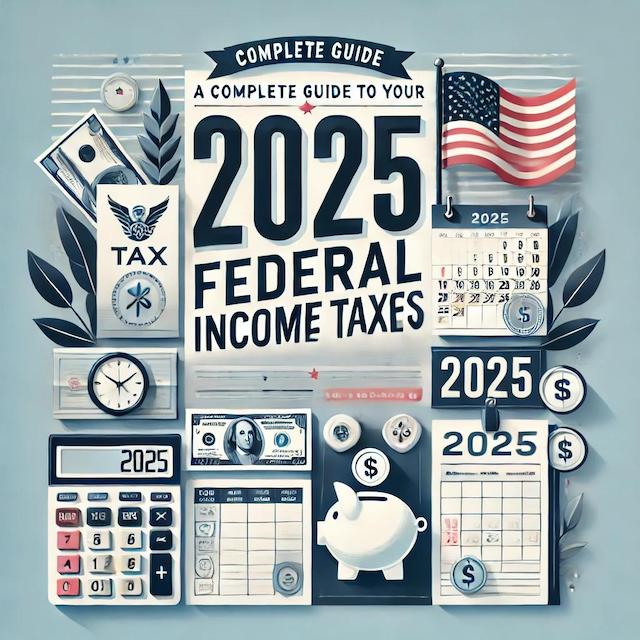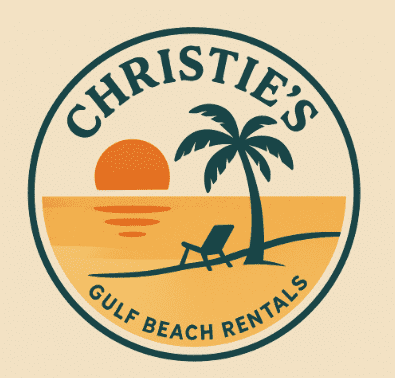Last updated on December 3rd, 2025 at 03:04 pm
Navigating federal income taxes can feel overwhelming, but with the right knowledge and a proactive approach, you can reduce your tax burden and keep more money in your pocket. Whether you’re a family member supporting dependents, a retiree utilizing the senior standard deduction, or an investor leveraging long-term capital gains, smart tax planning is essential.
The new law provides up to $46,700 standard deduction for a senior couple filing jointly
Seniors may get higher standard deduction, limits may be raised for deducting taxes and interest paid on homes
This article, “A Complete Guide to your 2025 Federal Income Taxes will help you with tax planning this year for your return due in April 2026. If you are a senior and have not filed your tax return for the year 2024, check out this article.
Saving money by planning ahead. You can help yourself and reduce our tax burden next year by planning now. In most cases, you must have taken action no later than December 2025. Waiting until the last month of the year may be too late; start now.
We are introducing the RMD, “Required Minimum Distribution”. Your age will trigger a requirement that you withdraw an amount from your tax-advantaged retirement plans or risk a very large penalty. This is one good reason for tax planning.
Time until the deadline to complete your 2025 Tax Strategy
15 practical tax-saving tips
In this guide, we’ll outline 15 practical tax-saving strategies for 2025, covering everything from Child Tax Credits to Lifetime Learning Credits, to help you maximize your tax savings.
Keep in mind that if the United States Congress does not reauthorize the 2017 tax act, some key deductions including the standard deduction will vanish. As of this writing, the new administration seems disposed to encourage Congress to reauthorize the bill.
This bill introduced new tax laws that created a new IRS form, SR-1040, for seniors and gave almost everyone a reduction in federal income tax.
For those of you who file a business tax return with the Internal Revenue Service, there are many provisions in the 2017 tax code that provide material benefits for small business owners. Check with your tax expert for guidance. This includes self-employed individuals who should pay attention to this article and do some effective tax planning.
Federal Income Tax Brackets 2025
Here are the federal income tax brackets for the 2025 tax year for both single filers and married couples filing jointly:
| Tax Rate | Single Filers’ Taxable Income | Married Filing Jointly Taxable Income |
|---|---|---|
| 10% | $0 to $11,925 | $0 to $23,850 |
| 12% | $11,926 to $48,475 | $23,851 to $96,950 |
| 22% | $48,476 to $103,350 | $96,951 to $206,700 |
| 24% | $103,351 to $197,300 | $206,701 to $394,600 |
| 32% | $197,301 to $250,525 | $394,601 to $501,050 |
| 35% | $250,526 to $626,350 | $501,051 to $751,600 |
| 37% | Over $626,350 | Over $751,600 |
These brackets are adjusted annually by the IRS for inflation.
The standard deduction for 2025 has increased to $15,000 for single filers and $31,500 for married couples filing jointly.
Senior addition for over age 65 for a couple filing joint: $3,200
New law provides an additional $12,000 deduction for senior couples filing joint.
Above amount divide by 2 if sing.e
These adjustments aim to prevent “bracket creep,” ensuring that inflation does not push taxpayers into higher tax brackets when their real income hasn’t increased.
Our short article below is just the start of your understanding of planning for the tax year 2025. Remember, you can make deposits into your retirement accounts until April 14, 2025, for the year 2024 if you have not made your maximum contribution during the calendar year 2024.
You can do so until April 2024, along with your contribution for the tax year 2025. The longer the funds are in your retirement accounts, the greater the potential return.
2017 Tax Reductions will expire unless renewed
Check here to understand where congress is on renewing the bill
Starting a Business After Retirement: Tax Benefits
Starting a business after retirement offers several tax benefits. Here’s a list of potential advantages when planning for 2025 taxes:
1. Deductions for Business Expenses
- Startup Costs: You can deduct up to $5,000 in startup expenses if total costs are $50,000 or less.
- Operational Expenses: Ongoing costs like utilities, rent, insurance, marketing, and office supplies are deductible.
- Home Office Deduction: If you use part of your home exclusively for your business, you can deduct associated expenses such as mortgage interest, property taxes, and utilities.
2. Retirement Contributions
- Self-Employed Retirement Plans: Contributions to SEP-IRAs, SIMPLE IRAs, or solo 401(k)s can significantly reduce taxable income.
- Catch-Up Contributions: For those over 50, catch-up contributions to retirement accounts allow you to save more tax-deferred income.
3. Health Insurance Premiums
- As a self-employed individual, you can deduct health insurance premiums for yourself, your spouse, and dependents.
4. Social Security Tax Optimization
- Self-employed business owners only pay Social Security taxes on net business income. Strategic planning can help minimize this taxable income.
5. Depreciation
- You can depreciate the cost of large purchases, such as equipment, vehicles, or real estate, spreading out deductions over several years or opting for Section 179 to deduct the entire cost in the first year.
6. Qualified Business Income (QBI) Deduction
- Eligible businesses can deduct up to 20% of their qualified business income, reducing taxable income.
7. Travel and Transportation
- Business-related travel expenses, including mileage, airfare, lodging, and meals, are deductible.
- Vehicle expenses can be deducted using either the standard mileage rate or actual expenses.
8. Professional Services
- Fees for tax preparation, legal advice, and consulting related to your business are deductible.
9. Education and Training
- Costs for improving your business skills or acquiring new knowledge relevant to your business are deductible.
10. Family Employment
- If you hire family members, their wages are deductible, and you may not have to pay payroll taxes for certain family employees.
11. Charitable Contributions
- If your business donates to qualified charities, you can deduct these contributions as business expenses, provided they align with your business activities.
12. Health Savings Accounts (HSAs)
- If your business offers a high-deductible health plan, contributions to an HSA are deductible, and withdrawals for qualified medical expenses are tax-free.
13. Self-Employment Tax Deduction
- You can deduct the employer-equivalent portion of your self-employment tax directly from your gross income.
14. Loss Deductions
- If your business incurs a loss, you can use it to offset other income, reducing your overall taxable income.
15. Federal Income Tax Credits
- Research and Development (R&D) Credit: If your business engages in innovative activities, you may qualify.
- Work Opportunity Tax Credit (WOTC): If you hire certain individuals, such as veterans or long-term unemployed individuals, you can claim this credit.
- Energy Efficiency Credits: Credits may be available for implementing energy-efficient technologies.
Starting a business not only creates income opportunities but also provides multiple avenues for tax savings, making it a smart financial move in retirement with proper planning. Always consult with a tax professional to optimize these benefits for your specific situation. Read our complete series of articles about Starting a Business After Retirement by clicking the button here:

1. Maximize Retirement Contributions: Roth IRA vs. Traditional IRA
Investing in a Roth IRA or Traditional IRA is one of the most effective ways to save for retirement while reducing your taxable income.
- Traditional IRA: Contributions are tax-deductible now, but withdrawals are taxed in retirement.
- Roth IRA: Contributions are made with after-tax income, but withdrawals in retirement are tax-free.
For 2025:
- Traditional IRA: Up to $7,000 ($8,000 if over 50).
- Roth IRA: Up to $7,000 ($8,000 if over 50, income limits apply).
Tip: If you’re in a lower tax bracket now, focus on a Roth IRA for tax-free income later. Higher tax bracket? Consider a Traditional IRA for immediate savings.
2. Utilize the Standard Deduction and Senior Standard Deduction
The standard deduction reduces your taxable income without requiring itemization.
- 2025 Standard Deduction: $14,600 for single filers, $29,200 for married couples filing jointly.
- Senior Standard Deduction: If you’re 65 or older, you get an additional deduction (approximately $1,850 per person).
Tip: If your deductible expenses (mortgage interest, charitable contributions, etc.) exceed the standard deduction, itemize instead.
3. Take Advantage of the Child Tax Credit (CTC)
The Child Tax Credit is one of the most valuable tools for families.
- Worth up to $2,000 per qualifying child under 17. (may be increased for 2026)
- Partially refundable, meaning you could get money back even if you owe no taxes.
Tip: Ensure you meet income eligibility thresholds to claim the full credit.
Example:
“As a married couple with two children, Mike and Sarah reduced their federal tax bill by $4,000 using the Child Tax Credit.”
4. Claim the Lifetime Learning Credit (LLC)
The Lifetime Learning Credit can offset the costs of continuing education.
- Worth up to $2,000 per tax return.
- Covers tuition, fees, and supplies for eligible courses.
- Available even if you’re taking just one course to improve your job skills.
Tip: This credit isn’t limited by the number of years you can claim it, making it valuable for lifelong learners.
5. Leverage Long-Term Capital Gains Tax Rates
Investors can benefit from favorable long-term capital gains tax rates.
- Short-Term Gains: Taxed at ordinary income rates.
- Long-Term Gains: Taxed at 0%, 15%, or 20%, depending on your income.
Tip: Hold investments for over a year to qualify for long-term capital gains rates.
Example:
“Jane sold stocks after holding them for two years, reducing her tax rate on the profits from 24% to 15%.”
6. Maximize Health Savings Accounts (HSAs) and Flexible Spending Accounts (FSAs)
Both HSAs and FSAs allow you to save money tax-free for medical expenses.
- HSA Contribution Limits (2025): $4,150 (individual), $8,300 (family).
- FSA Contribution Limits (2025): $3,200 per year.
Tip: Unused HSA funds roll over indefinitely, while FSAs often have a “use-it-or-lose-it” policy.
7. Use Tax Loss Harvesting in Your Investment Strategy
Tax loss harvesting involves selling underperforming investments to offset gains from other assets.
- Offset up to $3,000 of ordinary income with investment losses.
- Carryover excess losses into future tax years.
Tip: Coordinate with your financial advisor to ensure proper timing.
8. Optimize Filing Status for Married Couples
Your filing status impacts your tax bracket and deduction eligibility.
- Married Filing Jointly: Typically results in a lower overall tax burden.
- Married Filing Separately: May benefit couples with significant deductible medical expenses.
Tip: Run tax scenarios for both statuses before filing.
9. Take Advantage of State Income Tax Deductions
Many states offer deductions for property taxes, mortgage interest, and charitable donations.
- Some states have no income tax, such as Florida, Texas, and Washington.
Tip: Research your state’s specific tax deduction opportunities. Some states, including Mississippi, charge zero income tax on withdrawals from retirement plans.

10. Contribute to a Retirement Plan Beyond an IRA
Aside from IRAs, employer-sponsored plans like 401(k) or 403(b) provide significant tax benefits.
- Contribution Limit: $23,000 ($30,500 if over 50).
- Employer matches are free money—maximize them.
Tip: Self-employed? Explore SEP IRAs or Solo 401(k)s.
11. Consider a Roth Conversion
A Roth conversion allows you to transfer funds from a Traditional IRA into a Roth IRA, paying taxes now for tax-free withdrawals later.
- Best done in years when you’re in a lower tax bracket.
Example:
“In a low-income year, Alex converted $50,000 from his Traditional IRA to a Roth IRA, securing tax-free withdrawals in retirement.”
12. Bundle Charitable Contributions
“Bunch” your charitable donations in a single tax year to exceed the standard deduction.
- Donor-advised funds (DAFs) are an excellent tool for managing large donations.
Tip: Keep detailed records for every donation.
13. Plan for Required Minimum Distributions (RMDs)
Starting at age 73, retirees must withdraw funds from Traditional IRAs and 401(k)s.
- Failing to take RMDs incurs a 50% penalty on the amount not withdrawn.
Tip: Use Qualified Charitable Distributions (QCDs) to satisfy RMDs tax-free. Check out a complete explanation of RMD at the bottom of this article.
14. Hire Family Members for Your Business
If you’re self-employed or run a small business, employing family members can result in significant tax benefits.
- Pay wages to family members and deduct their salaries as a business expense.
- Family members may be in a lower tax bracket.
Example:
“Steve hired his teenage daughter to help with office tasks, saving on payroll taxes while teaching her financial responsibility.”
15. Work with a Tax Professional
Even the best tax strategies are most effective with professional guidance.
- A tax professional can identify overlooked credits, deductions, and optimization strategies.
- Ideal for those with complex tax situations or multiple income sources.
Tip: Don’t wait until April—consult a professional early in the tax year.
📊 Quick Recap: Top 15 Tax-Saving Strategies for 2025
- Roth IRA vs. Traditional IRA
- Standard & Senior Standard Deduction
- Child Tax Credit
- Lifetime Learning Credit
- Long-Term Capital Gains Tax
- HSA & FSA Contributions
- Tax Loss Harvesting
- Filing Status Optimization
- State Income Tax Deductions
- Maximize Retirement Plans
- Roth Conversions
- Charitable Contributions
- RMD Planning
- Hiring Family Members
- Tax Professional Guidance
Strategic Roth IRA Conversions After Age 59½ for Unemployed Federal Income Tax Filers
When you reach age 59½, you gain the flexibility to withdraw money from your 401(k) and Traditional IRA accounts without incurring the 10% early withdrawal penalty. At this point, if you’re not employed and have little to no taxable income, you are in a unique position to strategically convert pre-tax retirement savings into a Roth IRA to optimize your long-term tax liability.
This article has an impact on retirees.
📊 Key Concepts of Roth IRA Conversions
1. Tax Treatment of Roth IRA Conversions
- When you convert funds from a Traditional IRA or 401(k) to a Roth IRA, the amount converted is considered taxable income in the year of the conversion.
- However, Roth IRA withdrawals in retirement are tax-free if certain conditions are met (e.g., the account has been held for at least 5 years, and you’re over 59½).
2. Why It’s Beneficial When Unemployed
- Without employment income, your taxable income may be significantly lower, potentially placing you in a lower tax bracket.
- You can convert a portion of your 401(k) or Traditional IRA funds up to the limit of your current tax bracket without crossing into a higher bracket.
- This allows you to pre-pay taxes at a lower rate while reducing the size of your taxable pre-tax retirement accounts.
3. Tax-Free Growth in the Roth IRA
- Once the funds are in a Roth IRA, they grow tax-free.
- Future withdrawals from the Roth IRA are not taxed, unlike distributions from a 401(k) or Traditional IRA.
📈 Advantages of a Strategic Conversion Plan
- Control Over Tax Brackets Each Year
- By converting only up to the limit of your current tax bracket, you avoid bumping into a higher bracket and pay taxes at a predictable, lower rate.
- For example, if you’re in the 12% bracket, converting just enough to stay within that bracket prevents you from moving into the 22% bracket.
- Reduced Required Minimum Distributions (RMDs)
- At age 73, you must start taking RMDs from your Traditional IRA and 401(k).
- By converting funds now, you’re reducing the balance in those accounts, which lowers your future RMD amounts and, therefore, your future taxable income.
- Tax Diversification in Retirement
- Having funds in both pre-tax (Traditional IRA, 401k) and post-tax (Roth IRA) accounts provides flexibility to manage taxable income in retirement.
- Estate Planning Benefits
- Roth IRAs are often a better asset to pass on to heirs because withdrawals remain tax-free for beneficiaries under most circumstances.
🛠️ Example Strategy
- Tax Bracket: Suppose the 12% tax bracket goes up to $50,000 for single filers.
- Income: If you have no other income, you could convert up to $50,000 from your Traditional IRA to a Roth IRA and only pay 12% tax on that conversion amount.
- By repeating this strategy annually, you gradually move taxable funds into a tax-free Roth IRA without triggering higher tax rates.
📅 Long-Term Benefits of This Strategy
- Lower taxable income in retirement due to reduced RMDs.
- Increased tax-free income from Roth IRA withdrawals.
- Flexibility to withdraw from different accounts to optimize annual taxable income.
- Potential for leaving a tax-free inheritance to beneficiaries.
🔑 Key Takeaways
- Start Roth IRA conversions after age 59½ when you’re no longer subject to early withdrawal penalties.
- Convert amounts up to the limit of your current tax bracket to avoid triggering higher tax rates.
- Reevaluate this strategy annually based on your income and tax situation.
- Enjoy tax-free growth and withdrawals from your Roth IRA in retirement.
This approach ensures you are paying taxes strategically now to minimize them later, creating a more tax-efficient retirement plan.
Required Minimum Distribution (RMD) Explained
A Required Minimum Distribution (RMD) is the minimum amount that retirees must withdraw from their tax-deferred retirement accounts each year once they reach a certain age. This rule is in place to ensure that retirement funds are eventually taxed.
Which Accounts Are Subject to RMDs?
RMDs apply to tax-advantaged retirement accounts, such as:
- Traditional IRAs
- SEP IRAs
- SIMPLE IRAs
- 401(k) and 403(b) plans
- Other employer-sponsored retirement plans
Roth IRAs are an exception—RMDs are not required for the account owner during their lifetime. However, beneficiaries of inherited Roth IRAs may have RMD requirements.
When Do RMDs Start?
- If you were born before January 1, 1951, you had to start taking RMDs at age 70½.
- If you were born in 1951 or later, the SECURE Act 2.0 changed the starting age:
- Born 1951–1959 → RMDs start at age 73.
- Born 1960 or later → RMDs start at age 75.
The first RMD must be taken by April 1 of the year following the year you reach the required age. After the first year, RMDs must be taken annually by December 31.
How Are RMDs Calculated?
The IRS determines RMD amounts based on:
- Your account balance at the end of the previous year.
- A life expectancy factor from the IRS Uniform Lifetime Table.
Formula: RMD = Account Balance (as of Dec 31 last year), IRS Life Expectancy FactorRMD=IRS Life Expectancy FactorAccount Balance (as of Dec 31 last year.
For example, if your IRA had $500,000 at year-end and the IRS life expectancy factor is 25.6, your RMD would be:$500,000÷25.6=$19,531.
This means you must withdraw at least $19,531.25 that year.
What Happens if You Don’t Take Your RMD?
If you fail to withdraw your RMD on time, the IRS penalty is 25% of the required amount (reduced to 10% if corrected within two years).
Can You Withdraw More Than the RMD?
Yes, you can withdraw more than the RMD, but any amount withdrawn (except from a Roth IRA) is taxed as ordinary income.
Can You Delay RMDs?
- If you’re still working and have a 401(k) at your current employer, you may be able to delay RMDs from that plan until you retire (unless you own 5% or more of the company).
- You cannot delay RMDs for IRAs.
How Can You Reduce RMD Taxes?
- Roth Conversions: Convert pre-tax retirement funds to a Roth IRA (but this triggers taxes at the time of conversion).
- Qualified Charitable Distributions (QCDs): Donate up to $100,000 annually to a charity directly from your IRA—this counts toward your RMD but is tax-free.
- Withdraw strategically: Spread withdrawals over several years to manage tax brackets.
Would you like help calculating your RMD for a specific account balance?
Use this official government calculator, click on the button below, and enter the information, and you will get an instant result.
Conclusion:
Smart tax planning isn’t just about filing your return—it’s about implementing effective tax strategies throughout the year. Whether you’re maximizing retirement plans, leveraging long-term capital gains, or claiming the Child Tax Credit, these 15 strategies will help you minimize your federal taxes and secure your financial future.
Keep an eye on what Congress does this year. There are many tax changes and some of the proposals seem to have enough votes to pass, which usually means they will apply to the 2026 tax year. Some may apply to this year. The most important vote must be to reauthorize the 2017 tax act, which largely expires at the end of this year and would have a great impact on taxpayers.
IRS Tax Deadlines Calendar for 2025
| Date | Deadline | Description |
|---|---|---|
| January 15, 2025 | 4th Quarter Estimated Tax Payment for 2024 | Pay estimated taxes for income earned in Q4 of 2024. |
| April 15, 2025 | Filing Deadline for 2024 Tax Return (Form 1040) | File your individual tax return for 2024 or request an extension. |
| April 15, 2025 | Last Day to Make IRA Contributions for 2024 | Make final contributions to IRA accounts for the 2024 tax year. |
| April 15, 2025 | 1st Quarter Estimated Tax Payment for 2025 | Pay estimated taxes for income earned in Q1 of 2025. |
| June 16, 2025 | 2nd Quarter Estimated Tax Payment for 2025 | Pay estimated taxes for income earned in Q2 of 2025. |
| September 15, 2025 | 3rd Quarter Estimated Tax Payment for 2025 | Pay estimated taxes for income earned in Q3 of 2025. |
| October 15, 2025 | Extended Deadline for 2024 Tax Return (Form 1040) | Final deadline for taxpayers who requested an extension. |
PODCAST

250 Years: Price Stability Lost to Slow Inflation – RetireCoast
Discover more from RetireCoast.com
Subscribe to get the latest posts sent to your email.









